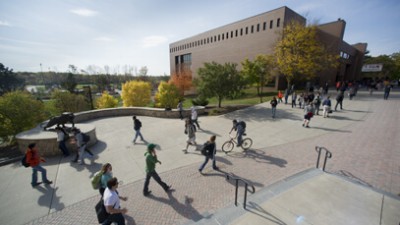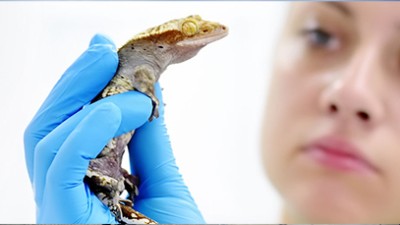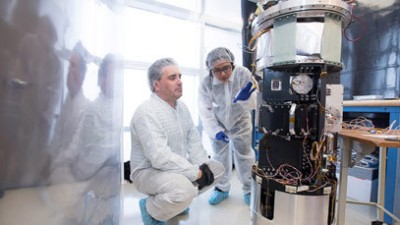Pichichero, 3.R. Osgood, F. Salamone, A. Diaz, J. Casey, P. Bajorski, M. "Effect of pH and Oxygen on Biofilm Formation in Acute Otitis Media Associated NTHi Clinical Isolates." The Laryngoscope. (2015): 12-24. Print.
Bajorski, Peter, et al. "Fusing High Spatial Resolution RapidEye and High Temporal Resolution MODIS Imagery for Land Cover Classification." Remote Sensing TBD. (2015): --. Print.
Bajorski, Peter, et al. "Effect of pH and Oxygen on Biofilm Formation in Acute Otitis Media Associated NTHi Clinical Isolates." The Laryngoscope. (2014): NA. Print.
Bajorski, Peter, et al. "Stochastic Analysis and Modeling of a Tree-Based Group Key Distribution Method in Tactical Wireless Networks." Journal of Telecommunications System & Management. (2014): 1-8. Web.
Bajorski, P., P. Hall, and H. Rubinstein. "Methodology and Theory for Nonnegative-Score Principal Component Analysis." Statistica Sinica 23. 2 (2013): 963-988. Print.
Bajorski, P. "Non-Gaussian Linear Mixing Models for Hyperspectral Images." Journal of Electrical and Computer Engineering 2012. (2012): 1-8. Print.
Bajorski, P. "Practical Evaluation of Max-Type Detectors for Hyperspectral Images." IEEE Journal of Selected Topics in Applied Earth Observations and Remote Sensing 5. 2 (2012): 462-469. Print.
Bajorski, P. "Generalized Detection Fusion for Hyperspectral Images." IEEE Transactions on Geoscience and Remote Sensing 50. 4 (2012): 1199 - 1205. Print.
Bajorski, P. "Target Detection Under Misspecified Models in Hyperspectral Images." IEEE Journal of Selected Topics in Applied Earth Observations and Remote Sensing 5. 2 (2012): 470-477. Print.
Bajorski, Peter. "Generalized Detection Fusion for Hyperspectral Images"." IEEE Transactions on Geoscience and Remote Sensing 50. 4 (2012): 1199 -1205. Print.
Bajorski, Peter. "Target Detection Under Misspecified Models in Hyperspectral Images." Journal of Selected Topics in Applied Earth Observations and Remote Sensing 5. 2 (2012): 470-477. Print.
Bajorski, Peter. "Practical Evaluation of Max-Type Detectors for Hyperspectral Images." IEEE Journal of Selected Topics in Applied Earth Observations and Remote Sensing 5. 2 (2012): 462-469. Print.
Bajorski, Peter. "Non-Gaussian Linear Mixing Models for Hyperspectral Images." Journal of Electrical and Computer Engineering 2012. Article ID 818175 (2012): 8 pages-. Print.
Bajorski, Peter. "Generalized Detection Fusion for Hyperspectral Images." IEEE Transactions on Geoscience and Remote Sensing PP. 99 (2011): 1-7. Print.
Bajorski, Peter. "Statistical Inference in PCA for Hyperspectral Images." IEEE Journal of Selected Topics in Signal Processing 5. 3 (2011): 438-445. Print.
Bajorski, Peter. "Second Moment Linear Dimensionality as an Alternative to Virtual Dimensionality." IEEE Transactions on Geoscience and Remote Sensing 49. 2 (2011): 672-678. Print.
Bajorski, Peter. "Second Moment Linear Dimensionality as an Alternative to Virtual Dimensionality." IEEE Transactions on Geoscience and Remote Sensing 49. 2 (2011): 672-678. Print.
Bajorski, Peter. "Statistical Inference in PCA for Hyperspectral Images, IEEE Journal of Selected Topics in Signal Processing,." IEEE Signal Processing 5. 3 (2011): 438-445. Print.
Bajorski, Peter. "Generalized Detection Fusion for Hyperspectral Images"." IEEE Transactions on Geoscience and Remote Sensing PP. Issue: 99 (2011): 1-7. Print.






